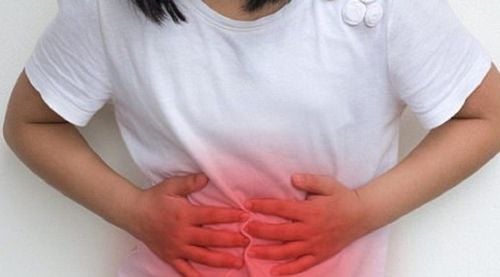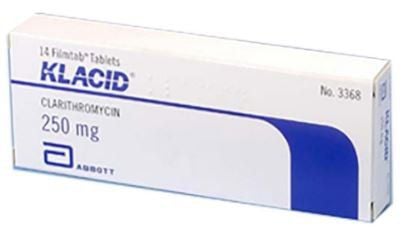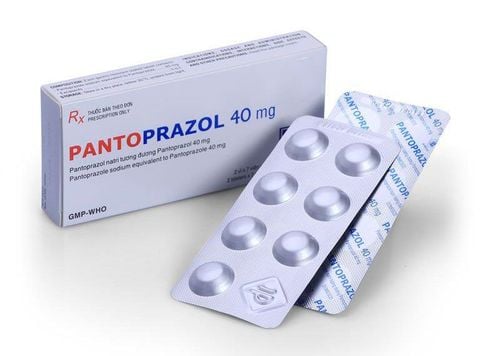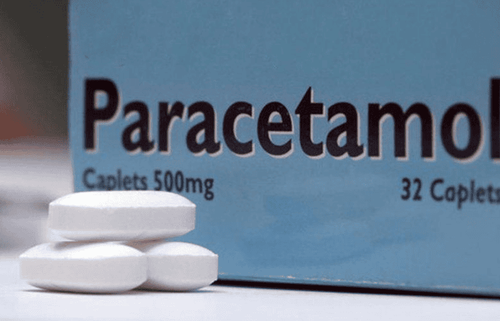This is an automatically translated article.
Peptic ulcer disease is a disease that causes inflammatory lesions and ulcers on the lining of the stomach or duodenum (the first part of the small intestine). These injuries occur when the lining (the innermost lining) of the stomach or duodenum is worn away and the layers below the stomach or intestinal wall are exposed.
1. Symptoms of peptic ulcer disease in children

Đau quanh rốn - triệu chứng thường gặp ở viêm loét dạ dày
The disease can present with acute gastrointestinal bleeding such as vomiting blood or passing black stools with abdominal pain and acute anemia. If not treated in time, it will cause death due to anemia. But can also develop slowly in the primary ulcer form, which is common in older children, especially children > 6 years of age, the main clinical presentation is similar to that of adults but less typical.
Family history of peptic ulcer. Abdominal pain: accounted for 64.5% of ulcer cases, epigastric pain, pain around the navel or whole abdomen, pain related to meals, pain can be reduced after eating. Children often have pain at night, so they are awakened in the middle of the night or early in the morning. Repeated, recurrent, often abdominal pain is the reason why family members take them to the doctor. Recurrent vomiting, related to meals Feeling uncomfortable, vague epigastric region Gastrointestinal bleeding: Children may vomit blood and pass black stools, the condition can occur massively or rapidly. slow, prolonged. Anemia: Usually hypochromic anemia due to occult bleeding but sometimes severe anemia, acute shock. In some cases, the presentation is subtle, only anemia is the prominent symptom, the initial diagnosis is usually anemia of unknown cause. If not detected and treated in time, there will be complications such as chronic anemia, effects on children's physical development, pyloric stenosis and even cancer related to H.P infection (although very rare in children). small).
2. Causes of stomach ulcers in children

Xét nghiệm hơi thở phát hiện vi khuẩn HP gây bệnh viêm loét dạ dày trẻ em
In addition, peptic ulcers in children can also be caused by children studying too much, worrying too much leading to stress, in addition to the use of some drugs also cause damage to the stomach.
Especially, one of the causes of peptic ulcer disease in children cannot fail to mention HP bacteria.
Helicobacter Pylori (HP) is a spirochete Gr (-), 0.3- 0.5 μm in size, with 4-6 flagella at one end, living in the mucous layer covering the stomach lining In studies Recently, it has been increasingly found that there is a close relationship between the incidence and frequency of recurrent peptic ulcer disease and HP infection.
The rate of HP infection is quite high in people with peptic ulcer disease, more and more studies have found a close relationship between the rate of HP infection and peptic ulcer disease. After entering the stomach, bacteria will reside in the mucous layer covering the stomach surface, thanks to the bacterial adhesion factors that adhere to the gastric mucosal epithelium and secrete enzymes and toxins that cause damage. gastric mucosal injury.
To detect HP bacteria, there are a number of methods such as direct staining, histopathology, rapid test (Urease test) and culture, in which culture is the gold standard for determining HP infection and through culture. That makes an antibiotic chart to help doctors choose the most suitable antibiotic to eradicate HP. Currently, non-invasive diagnostic methods, which are less annoying for patients, are also highly accurate and easy to perform.
Breath test with C13 radiolabelled Urea, give the patient a small amount of radiolabelled C13 urea to drink. If the patient has HP infection, HP Urease will rapidly decompose Urea-C13 into Ammonia and Carbon Dioxide. This radioactive carbon dioxide enters the bloodstream, reaches the lungs, and is detected in exhaled air using a spectrometer. Faecal test for HP antigens. ELISA technique to find antigens in stool through a simple and highly sensitive diagnostic kit. This method is suitable for detecting HP in children as well as monitoring HP before and after treatment. Due to the cost, it is not really popular. Saliva and Urine Tests: These tests are based on the detection of IgA or IgG (primarily IgG) anti-HP in saliva and urine. This method is not yet popular.
3. Treatment of peptic ulcer disease in children
For common reasons, parents should not put pressure on children to eat and learn. Children should spend more time playing outdoors than just learning and playing indoors.
For the cause of HP bacteria: The eradication of HP bacteria is an important step in the treatment of peptic ulcers in children, helping to speed up the healing process and especially the prevention of disease recurrence. effective. Often combine 3 drugs to eradicate HP:
Combination of antibiotics used for 1-2 weeks in combination with acid secretion inhibitors can effectively kill HP. Reducing ulcer-causing factors: inhibiting acid secretion, neutralizing HCl. Enhances anti-ulcer factor, mucosal cover, stimulates epithelial mucosal regeneration and mucus secretion. Eliminate the cause of the secondary ulcer. With many new drugs on the market today, the treatment of peptic ulcers in children has brought many good results, avoiding complications related to surgery such as perforation or pyloric stenosis.
Peptic ulcer in children is a dangerous disease, so that children can be diagnosed and treated correctly and effectively, avoiding possible complications. Parents should choose top reputable institutions.
In which the general and specialized pediatric clinic at Vinmec Times City International General Hospital is the first choice for parents.
Clinic accepts and treats all common pediatric diseases and specialized diseases: recurrent peptic ulcers, kawasaki, encephalitis, precocious puberty, staphylococcal infections, syndromes 4S, hemophagocytic syndrome, acute pancreatitis,... Examined by Assoc. Prof. TS.BS Nguyen Thi Hoan - Head of Pediatric Outpatient Department - Vinmec Times City International Hospital, with 40 years of professional experience Department of Pediatrics and Vice President of the branch of Pediatric Endocrinology Association - Vietnam Pediatrics Association. At Vinmec Times City, the investment is methodical and complete with a system of clinics and inpatient rooms of international standards arranged at the hospital according to each specialized area. Parents can directly bring their children to Vinmec Times City for examination or contact hotline 0243 9743 556 for support.













